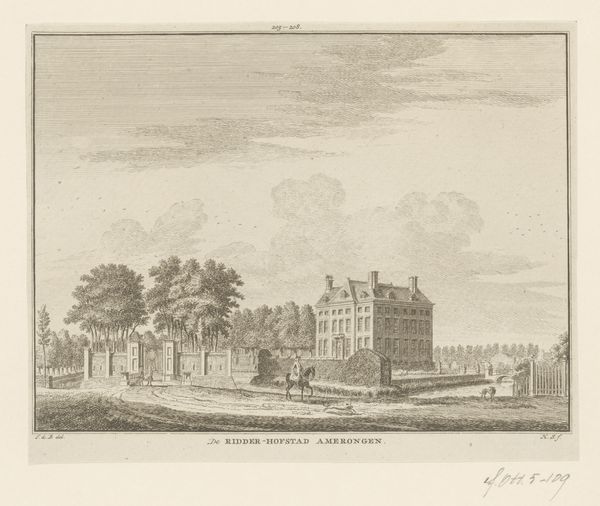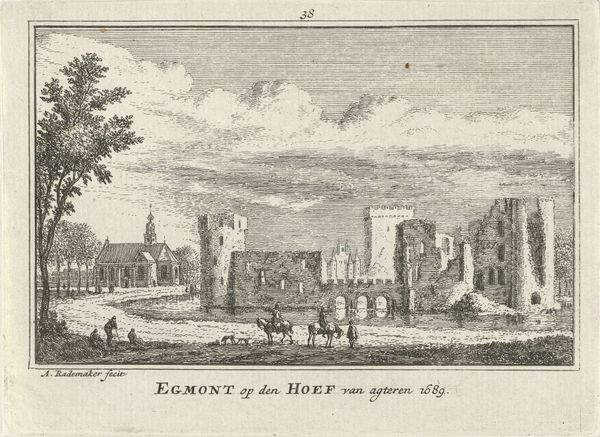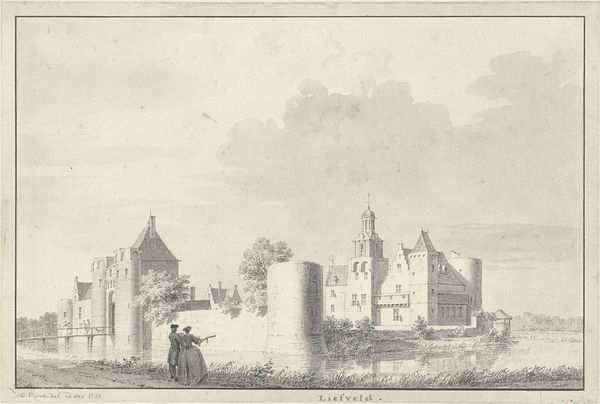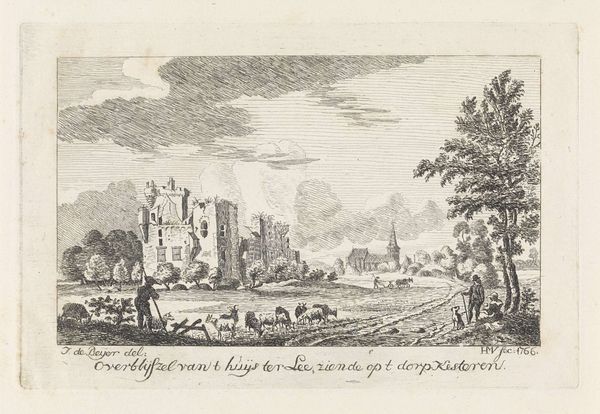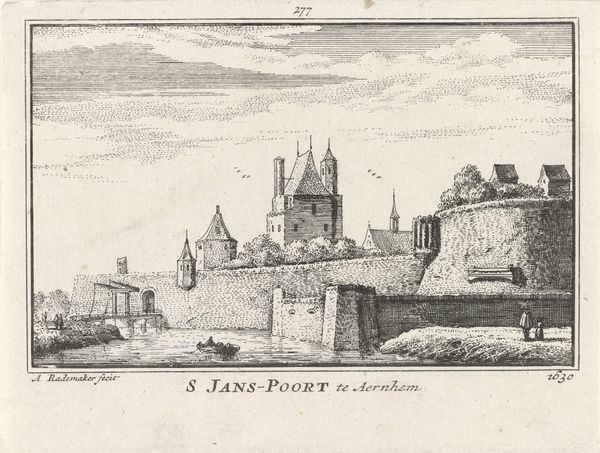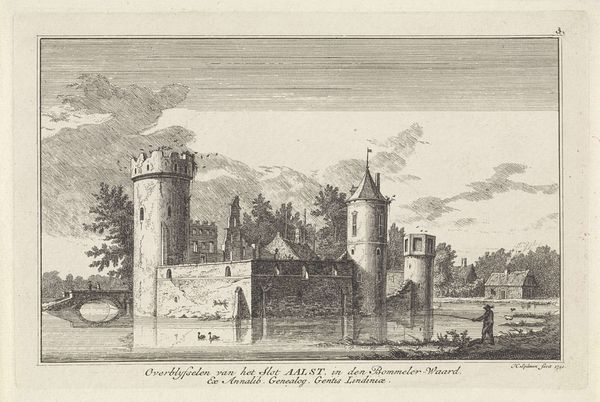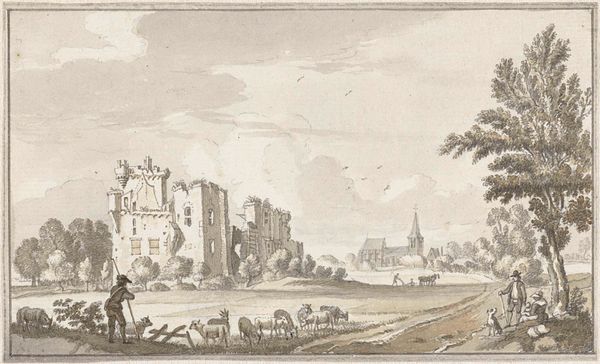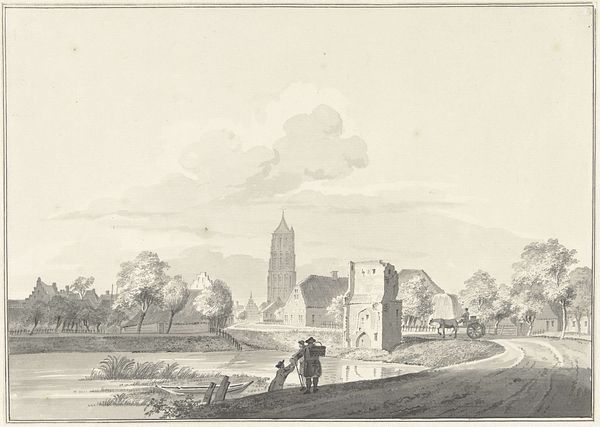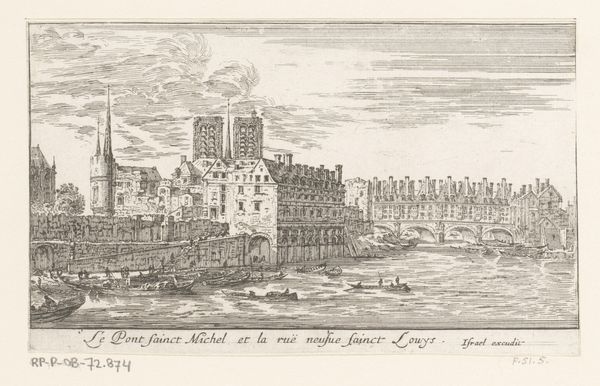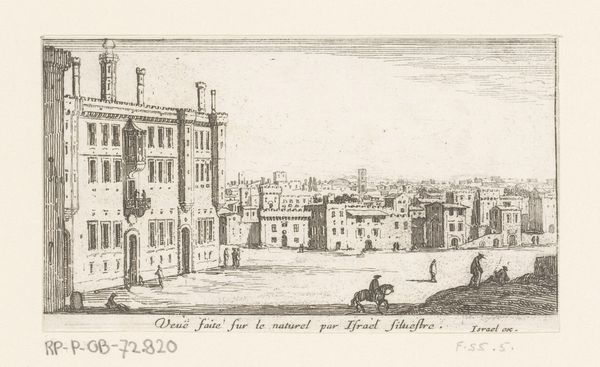
print, engraving
#
dutch-golden-age
# print
#
old engraving style
#
landscape
#
cityscape
#
engraving
#
realism
Dimensions: height 80 mm, width 115 mm
Copyright: Rijks Museum: Open Domain
Abraham Rademaker's "View of the Catharijnepoort in Utrecht," created in 1669, is a study in contrasts rendered through etching. The detailed linework captures a cityscape divided horizontally: the weighty architecture reflected in the fluidity of the water. This contrast creates a dynamic visual tension that animates the seemingly static scene. Rademaker employs a structuralist approach, breaking down the landscape into binary oppositions: built versus natural, solid versus liquid. These binaries aren't merely representational; they function as semiotic markers that reflect the societal values of the time. The Catharijnepoort, a symbol of Utrecht’s power, confronts the viewer, yet its reflection suggests a fragility to these structures. In its composition, this artwork is an exploration of the interplay between form and function, inviting us to consider how such visual elements can destabilize fixed meanings and engage with new ways of thinking about space and power. The subtle subversion of expectations invites ongoing interpretation.
Comments
No comments
Be the first to comment and join the conversation on the ultimate creative platform.

